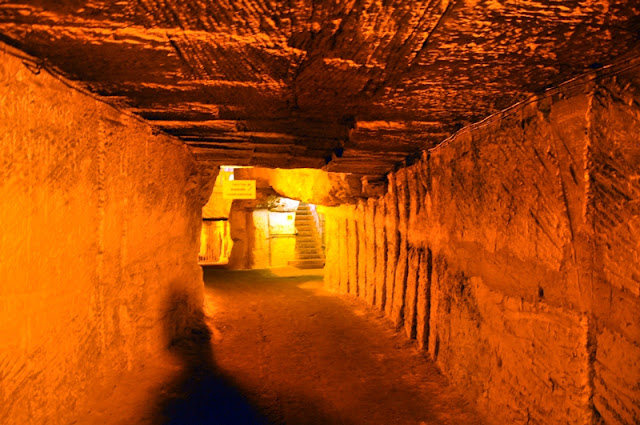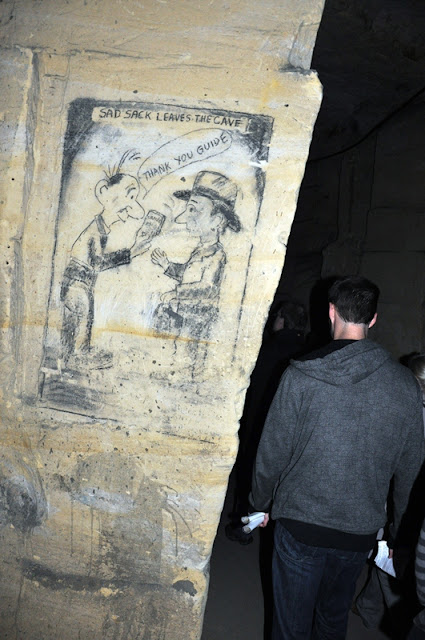Europe 2012- Day 26: Valkenburg Castle and Caves
Valkensburg was our destination for Wednesday to see some
Castle ruins and caves. We borrowed the car from Nate once again and headed
south. This was the first time I had driven a long distance without Nate, so I was
a little nervous but I managed.
The GPS directed us to the address I had punched in, but
there was no castle there. We did see some tourist caves though so we parked.
After walking in some big doors that said Welkom above them we were greeted by
a girl speaking Dutch. I asked for English and she told me they were closed. I
asked if she could tell me where the castle was and she said it was just down
the hill the direction we had come from.
Since I knew we were also looking for caves we went to look
at these caves, which turned out to be some kind of mining caves. Interesting
as they might have been they were not what we were looking for, nor did they
open for another ½ hour so we decided to try find the castle again.
 |
| A mining cart |
 |
| A map of the mines |
 |
| A view in the caves |
Unfortunately where we had parked they require a special
coin to get out, and it doesn’t matter how long you park for it costs 3 euros,
so that was a spendy 10ish minutes.
After driving down the hill and looking up some streets we
saw the castle ruins up on a hill. As it’s a small town they didn’t have a
parking garage so we had to find street parking which would only allow us to
pay for 2 hours of parking at a time.
After walking to the castle we found if you bought tickets
to the castle and caves, which were adjacent to the castle you could save a
whole 50 euro cents, so we did that. We were told that the cave tours start on
every hour so we had about a half hour to go through the castle ruins and get
down to the cave tour.
The Valkensburg castle had been added to several times, but
the original keep was built back in 1115. It only survived 7 years though as it
was sieged in 1122. It was rebuilt bigger and sieged and destroyed a couple of
other times. The ruins that are still there are from a castle built in the 14th
century. This castle was destroyed by friendly fire from the Dutch king who
didn’t want the castle to fall into French hands in 1672 during the
Dutch-French War.
 |
| As this sign says, the Valkenburg Castle is the only Castle in Holland built on a hill, probably because there are only 2 hills in all of Holland and the other hill had a indoor ski park on it. |
 |
| The door to the lower left goes down into the caves. It was the Castle's evacuation route. |
 |
| A steam train |
 |
| This is what the original Castle looked like |
 |
| After the original Castle was destroyed, this is what was rebuilt to replace it. |
 |
| This is what the Castle looked like before it was destroyed. |
 |
| View from the ruins |
By the time we were done rushing though the ruins we had
just a couple minutes before the cave tours started. The cave tour was all in
Dutch but we had been given an English handout with a brief description of each
thing he was going to stop and talk about.
 |
| A model of the castle ruins |
The first picture our guide talked about is one of the miner
with all his gear as well as a map of the caves that the minor would have known
by heart.
Then there was a display case that showed some fossilized
remains of some marine animals that lived there some 60 million years ago.
The third stop was on a block cutter’s workstation. He
explained how the work was done: first, a hammer chisel was used to cut out the
top side of the block, making a groove about 10 cm high and 90 cm deep. Both
sides of the block were then cut away with a saw. The bottom was either sawed
free or broken free. The blocks were used for building houses, churches, and
castles.
In 1853 the railway was completed in Valkenburg. After that
hotels started popping up, so to make the caves more attractive to tourists
they decorated them with drawings. To do this they first had to smooth the cave
walls, then they blackened them with charcoal, and then used a sharp object to
scratch into the wall.
This drawing is the first of several that tell of two
brothers, Walram and Reginald, in love with the same woman named Alexis.
Stop 5 shows Walram de Rosse who was the ruler of Valkenburg
in a battle over inheritance. The red coloring on this drawing is made of the
root of a small plant called matter. Due to the overuse of this plant it was
almost extinct by 1900.
The next picture is an illustration of what the castle
looked like before its final destruction in 1672.
This sad picture shows the result of the two brothers and
one lady. Alexis decided to marry Walram. The wedding took place at the Castle
of Valkenburg. After the festivities, they returned to their wedding chamber to
find Walram’s brother Reginald, mad with jealousy he murdered them both.
Stop 10: September 13, 1944: As the Americans entered
Limburg many places considered it the end of WWII. Valkenburg didn’t suffer
much during the war however in the last 6 days before being liberated roughly
600 locals stayed inside the velvet caves to seek shelter from the fighting.
After being liberated some of the soldiers who went and toured
the caves while on leave left their own impression when the tour guide charcoaled
their silhouettes on the cave walls.
There was a period of time in 1794 where the area was under French Republic rule. Priest were required to swear opposition to the French Royal house, or were no longer allowed to serve. Many priest who opposed were captured and imprisoned. Some priests sought shelter in the caves so they could continue to serve in secret
In 1993 two young boys snuck into the caves without anyone
knowing, their flashlight broke and they were unable to find their way out of
the caves. Both boys died in the caves due to a combination of dehydration and
hypothermia.
Our guide in English explained that he was going to walk
around the corner and shut the light off so we could get an idea of how dark
the cave really was, and that we needed to stay put with the rest of the group.
Just him walking around the corner you couldn’t really see anything, and then
he shut the light off, and it was dark. After a couple minutes I expected him
to turn the light on and walk back but all the sudden he turned a flashlight on
standing right in front of us. I think he startled all of us by walking back
with no light on. None of us heard him coming.
Glad to have any little bit of light back on he showed us
one last thing. In 1937 a staircase was discovered that led into the castle
walls. It was an evacuation route used by the castle back in the 12th
and 13th century.
 |
| I thought this drawing was funny, showing that you should tip your tour guide. In the picture the guy is giving the guide cigarettes as a tip. |
After our cave tour we had to go and pay for more parking so
we could eat some lunch. The guys had enjoyed the pancake lunch we had a few
days earlier we decided to have pancakes again and then headed home.



































Comments
Post a Comment